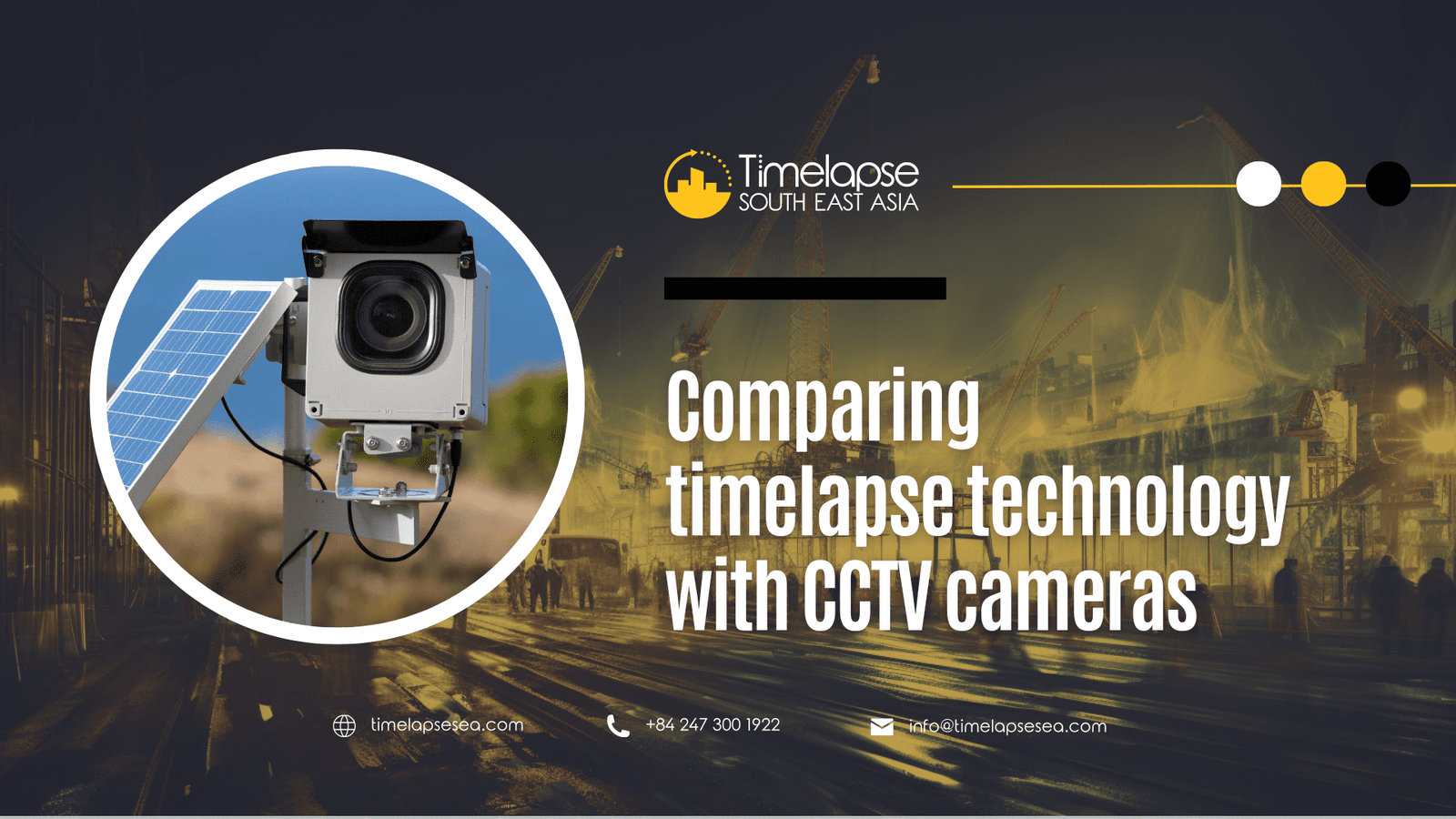In the world of construction projects, security and documentation play vital roles in ensuring successful outcomes. While Closed-Circuit Television (CCTV) systems have long been trusted for real-time surveillance and security purposes, timelapse cameras offer a unique and comprehensive approach to project documentation. In this article, we will delve into the practical benefits of timelapse cameras and their unparalleled ability to capture the entire journey of a construction project.
CCTV Systems: Traditional Security Solutions
CCTV systems have been the conventional choice for real-time security surveillance. Designed primarily for monitoring and recording, CCTV cameras are strategically placed to cover specific areas of a construction site. While they serve their purpose in providing security, their narrow field of view limits their ability to capture the overall progress and dynamics of a project.
Timelapse Cameras: An Immersive Documentation Experience
On the other hand, timelapse cameras offer a fresh and holistic perspective on construction projects. By capturing high-resolution images at regular intervals, these specialized cameras create a visual narrative of the project’s entire journey. With a wide-angle lens and an external location, timelapse cameras can cover the entire construction site, providing a comprehensive view of the progress and developments over time.
The Power of Visual Storytelling
One of the most significant advantages of timelapse cameras is their ability to condense extensive construction processes into engaging and easily digestible videos. These captivating timelapse videos serve as a powerful marketing tool, allowing companies to showcase their projects in a visually compelling format. Potential clients can witness the efficiency and capability of the company’s operations, creating a strong impact and leaving a lasting impression.
Efficient Project Management
Beyond their marketing prowess, timelapse cameras offer invaluable support for project management. The daily reel of project progress allows construction managers to track and monitor developments remotely, eliminating the need for constant physical presence on-site. Timelapse footage acts as a time machine, validating or disputing any requests for Extension of Time (EOT), potentially saving significant costs for the project.
CCTV vs. Timelapse: A Matter of Project Needs
While both CCTV and timelapse cameras hold their place in the construction industry, the choice between the two often boils down to the specific requirements of a project. If the primary need is for real-time security surveillance, a CCTV system might be more suitable. However, for comprehensive project documentation and impactful marketing content, construction time-lapse cameras have a distinct edge.
Notable Timelapse Camera Options
Timelapse SEA is known for its cutting-edge technology and has partnered with Indochina Kajima for significant projects in Hai Phong and Quang Ninh, Vietnam. They offer advanced scheduling, remote camera control, rugged housing, reliable storage, long-lasting power, and innovative cloud features.
Timelapse X PRO offers the Time-lapse Pro 4K+ camera system, renowned for its ability to capture detailed photos and produce 4K Ultra HD time-lapse movies. Notable features of this camera system include power interruption alerts, 4G LTE cellular communication capabilities, and the option for additional accessories and hosting services to facilitate comprehensive project documentation. The camera’s powerful advanced scheduling functionality and the exceptional quality of its 4K images further contribute to its standout performance.
Concluding Thoughts
While both CCTV and construction timelapse cameras each offer their unique strengths, the latter’s ability to provide a visual timeline of a project’s evolution delivers unique benefits. From project management to marketing, construction timelapse cameras have proven themselves as a valuable tool in today’s construction industry.



